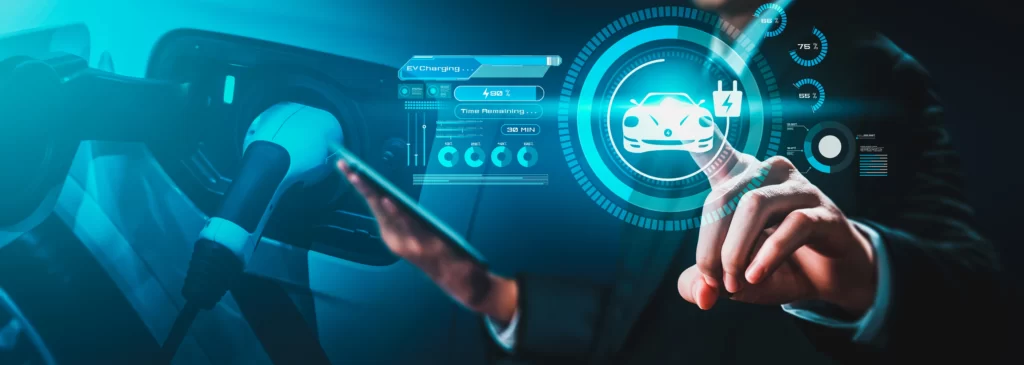Buying a car is one of the most emotional and financially significant decisions a person can make. Traditionally, this journey involved multiple showroom visits, printed catalogues, and long interactions with sales consultants. But in 2025, a large part of this journey has shifted online – driven by the rise of mobile, social media, EV innovation, and post-pandemic digital behaviour.
The customer experience in automotive industry has drastically evolved:
- Based on research, 80% of buyers now start their vehicle search online before ever speaking to a dealer.
- Customers expect Netflix-like recommendations, Amazon-like convenience, and Apple-like experiences from car brands.
- They demand relevant offers, model comparisons, local dealership information, and post-purchase support tailored to their interests and behaviour.

OEMs must address this shift with a digital infrastructure that delivers personalised automotive customer experiences across multiple touchpoints – from landing pages and product configurators to service portals and email campaigns.
Key Findings and Statistics on Automotive Customer Experience
- Personalisation Demand
- 43% of global car buyers consider personalisation options extremely or very important.
- 92% are willing to pay extra for personalised features, with 38% open to paying 6–10% more.
- However, only 57% feel manufacturers adequately cater to personalisation needs.
- Customer Loyalty
- Automotive brand loyalty in the U.S. increased by 1.8% in 2024, nearing pre-pandemic levels.
- 11 out of 47 brands surpassed the industry average in brand loyalty.
- Consumer Expectations vs. Industry Priorities
- 76% of consumers prioritise ease of use and accessibility, but only 51% of companies focus on these aspects.
- 90% of customers report dissatisfaction with inconsistent services across the vehicle lifecycle.
- Digital Experience and Efficiency
- Buyers who completed more than half of the purchase steps online saved an average of 42 minutes at the dealership.
- 82% of these buyers expressed high satisfaction with their dealership experience.
- Consumer Willingness to Switch Brands
- 46% of customers would switch to a different OEM if it delivered a better customer experience.
- 47% consider changing their automotive brand after a company fails to deliver a relevant customer experience.
Automotive Customer Experience: Challenges Faced by OEMs
Despite increasing investments in digital platforms, many OEMs face significant barriers in improving automotive CX:
- Disconnected Digital Ecosystems
- One-Size-Fits-All Content
- Underutilised Data
- Global Scale, Local Relevance
OEMs manage their online presence through siloed platforms – global brand websites, local microsites, separate dealer portals, and aftermarket service systems. These systems often lack interoperability, making unified personalisation a technical nightmare and limiting scalable customer experience in automotive.
Without personalisation, all users from different markets, interest levels, or customer stages receive the same generic homepage or vehicle pages. In the process, valuable opportunities for the OEM to engage with the customer and convert are lost.
OEMs often have rich first-party data on vehicle configurations, website behaviours, CRM history, ownership details, and service records. But if this data remains locked in silos or inaccessible, it cannot be activated to deliver the real-time, personalised interactions that define modern customer experience in the automotive industry.
Delivering consistent brand experiences, while also offering regionally relevant promotions, content, and vehicle models is a major challenge for OEMs. However, this is essential for creating meaningful automotive customer experiences in global markets.
How Adobe Experience Manager Solves These Problems
Adobe Experience Manager brings together content management, digital asset management (DAM), headless content delivery, and integration with Adobe’s personalisation and analytics tools. This allows OEMs to meet evolving customer experience trends in the automotive industry.
- Real-Time Personalisation with Adobe Target
- A user browsing SUVs will see homepage banners for SUVs with region-specific offers.
- A returning visitor sees the hybrid vehicle they configured last time, along with a new promotion or comparison tool.
- Visitors from colder climates may be shown winter tire bundles, while others see summer road-trip accessories, enhancing automotive CX at every interaction.
- Behavioural Segmentation with Adobe Analytics
- Group users into real-time segments (e.g., first-time visitors, potential EV buyers, returning customers, etc.)
- Deliver personalised experiences based on user lifecycle or purchase intent
- Dynamic Content Blocks
- Page banners can change based on customer segment.
- Vehicle pages can show accessories/add-ons based on user preferences.
- CTAs can dynamically switch from “Book a Test Drive” to “Explore Financing”, depending on customer behaviour.
- Unified Omnichannel Delivery
- Mobile apps and Progressive Web Apps (PWAs)
- Email campaigns (via Adobe Campaign)
- In-vehicle infotainment systems
- Dealer portals and service centres
With Adobe Experience Manager services and Adobe Target, pages dynamically adapt based on who the user is, what they have seen previously, where they are located, or what sales stage they are in.
Adobe Analytics provides deep insights into user behaviour, clicks, time spent, navigation paths, and abandonment points. AEM uses this data to:
This kind of behavioural segmentation is critical for impactful customer experience in the automotive industry.
Using AEM’s component-based architecture, content teams can design pages with smart components that adapt.
These dynamic content blocks optimise automotive customer experience across user journeys.
AEM enables content reuse across:
This omnichannel capability is a key driver of modern customer experience in the automotive industry.
Real-World Examples of Automotive CX Personalisation with AEM
- A returning user sees a homepage banner for the same hybrid SUV they configured last week, along with an offer from their local dealership – an example of localized, real-time automotive CX.
- A service portal dynamically displays maintenance reminders for the user’s specific model, along with related service offers.
- A blog post about weekend getaways suggests compatible vehicle accessories based on the user’s browsing history and region. This is personalisation in action, improving customer experience in automotive touchpoints.
Business Benefits for Automotive OEMs
Personalisation with AEM doesn’t just enhance user experience, it delivers measurable business results across the automotive customer experience lifecycle:
| Benefit | Description |
| Higher Engagement | Personalised pages reduce bounce rates and increase time-on-site. |
| Better Conversions | Relevant CTAs lead to more lead form submissions and test drive bookings. |
| Stronger Loyalty | Post-sale personalisation (e.g., service reminders) builds long-term value. |
| Scalable Global Rollouts | AEM Sites enable regional variations without recreating content. |
| Faster Time-to-Market | Modular templates help marketers launch faster without IT bottlenecks. |
How Digital Partners Like Embitel Add Value
Delivering an exceptional automotive customer experience with AEM requires more than just tools, it needs deep expertise. That’s where Embitel Technologies comes in.
We have a team of 200 experts who work on the following:
- Strategy Consulting: Identifying personalisation opportunities for automotive OEMs and mapping user journeys.
- AEM Implementation: Full-stack support for AEM Sites, Assets, Adobe Target, and Analytics.
- Data Integration: Connecting AEM to CRM, DMS, and commerce systems for unified user profiles.
- Component Development: Building dynamic content blocks that adapt to audience segments.
- Ongoing Optimisation: Analytics-driven content testing and performance tracking for continued automotive CX improvement.
Automotive Customer Experience Trends – 2025
- Omnichannel Engagement – Customers expect a seamless and consistent experience across digital, mobile, and in-person dealership touchpoints.
- Digital Purchasing & Self-Service – More buyers complete steps online, demanding transparent pricing and digital convenience throughout the car-buying journey.
- Subscription-Based Services – Flexible car subscription models are gaining popularity, appealing to users who prefer access over ownership.
- Connected Car Ecosystems – Vehicles are evolving into smart, connected car ecosystems with integrated infotainment, navigation, and telematics features.
- Immersive AR/VR Experiences – AR and VR technologies offer virtual test drives and digital showrooms, enhancing pre-purchase engagement.
- AI-Driven Customer Support – AI-powered chatbots and systems streamline service scheduling, diagnostics, and customer queries with real-time assistance.
- Sustainability and Electrification – EV adoption and eco-conscious practices drive CX improvements focused on environmental responsibility.
- Enhanced Loyalty Programs– Brands are investing in data-driven, personalised loyalty programs to retain customers and boost repeat sales.
Conclusion
The future of automotive branding lies in delivering standout experiences, not just standout vehicles. With Adobe Experience Manager’s exclusive features and implementation support from Embitel, OEMs can elevate every digital interaction into a meaningful moment of connection. This redefines automotive customer experience at all levels.
Whether it’s a homepage visit or a post-sale service reminder, the most successful brands will be those that personalise every step of the journey – because great vehicles deserve great experiences!




